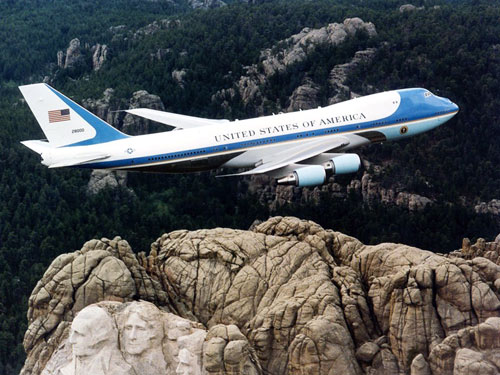VC-25 "Air Force One"
Summary
| Category | Military Transport Aircraft |
| Origin country | 🇺🇸 United States |
| Manufacturer | Boeing |
| First flight | 1 September 1989 |
| Year introduced | 1990 |
| Number produced | 2 units |
| Average unit price | $325 million |
Description
The VC-25, commonly known as "Air Force One," is the presidential aircraft of the United States. It is a specially modified version of the Boeing 747, used to transport the U.S. President and their entourage on national and international trips.
The history of the VC-25 dates back to the 1980s when the U.S. Air Force sought a new presidential aircraft to replace the older VC-137s that were in use at the time. The Boeing 747 was chosen for its capacity, range, and reliability. Two Boeing 747-200Bs were converted into VC-25As, serving as new "flying homes" for the U.S. President. They were delivered in August and December 1990, registered as 28000 and 29000 respectively.
The VC-25 is equipped with a multitude of advanced communication and security systems. It has sophisticated communication equipment, allowing the President to stay in contact with the world even while in flight. It is also equipped with electronic countermeasures to protect against potential threats. The electrical wiring, spanning 383 kilometers, is double that of a regular Boeing 747 and is designed to withstand electromagnetic waves generated by a nuclear explosion.
The interior of the VC-25 spans an area of 370 square meters and is divided into several functional zones. It includes an Oval Office where the President can work, a conference room for meetings with staff and dignitaries, a presidential suite with a bedroom and bathroom, and a press room for journalists accompanying the President on trips. There is a rule on Air Force One that a traveler can always move back from their assigned seat but never forward. Journalists or rearward travelers are strictly confined to that area.
The aircraft also has a fully equipped kitchen for preparing in-flight meals, as well as space to accommodate support staff, Secret Service members, and the aircraft crew. Each aircraft has storage and refrigeration capacity for over 2,000 meals to be self-sufficient during the entire duration of the presidential trip. This also allows them to fly for over a week non-stop without risking food shortage, provided they are refueled in-flight.
The VC-25 is operated by the 89th Airlift Wing, also known as the 89th Airlift Squadron, of the U.S. Air Force. The squadron is responsible for providing air support to the President, Vice President, and other top government officials. It is based at Andrews Air Force Base in Maryland.
When the President of the United States boards the VC-25, the aircraft is designated as "Air Force One." This term is used to refer to any U.S. Air Force aircraft carrying the serving President. Air Force One is considered a symbol of U.S. power and presence in the world.
In addition to its primary function as the presidential transport, the VC-25 can also be used for emergency relief missions during natural disasters or other emergency situations. It is capable of long-range flights without refueling, allowing it to quickly reach any part of the world if needed. As Air Force One, the VC-25 is an emblem of the American presidency and embodies the sovereignty and power of the United States during the President's travels.
Technical specifications
| Version: VC-25 "Air Force One" | |
|---|---|
| Crew | 26 incl. 4 flight officers |
| Operational range | 12,600 km (7,829 mi) |
| Maximum speed | 1014 km/h (630 mph) |
| Wing area | 511.0 m² (5499.8 sqft) |
| Wingspan | 59.6 m (195.5 ft) |
| Height | 19.3 m (63.3 ft) |
| Length | 70.6 m (231.6 ft) |
| Service ceiling | 13,746 m (45,098 ft) |
| Empty weight | 173,726 kg (383,000 lbs) |
| Max. takeoff weight | 377,842 kg (832,998 lbs) |
| Powerplant | 4 x turbojets General Electric CF6-80C2B1 delivering 25719 kgf each |
Current operating countries
All operators
